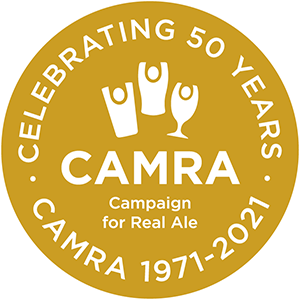George
Greater London South East - London
Three star - A pub interior of outstanding national historic importance
Listed Status: I
75-77 Borough High StreetLondon, Borough Market
SE1 1NH
Tel: (020) 7407 2056
Email: 7781@greeneking.co.uk
Website https://www.greeneking.co.uk/pubs/greater-london/george-southwark
Facebook https://www.facebook.com/georgeinnlondonbridge
Real Ale: Yes
Lunchtime Meals: Yes
Evening Meals: Yes
Nearby Station: London Bridge
Station Distance: 300m
Public Transport: Near Railway Station (London Bridge) and Bus Stop
Bus: Yes
View on: Whatpub
Owned by the National Trust since 1937, this is one of the country’s most historically important pubs, and the only purpose-built pub in London to be considered worthy of Grade 1 listing by Historic England. It’s a fascinating place to explore. The capital’s only galleried coaching inn, it’s a remarkable survivor dating from a 1676 rebuild after a fire destroyed the 16th-century original. The first and second floor galleries, with their dramatically warped woodwork, look out onto a large courtyard. There are several ground-floor rooms, with several external doors leading into them. The Parliament Bar, the first room on the right, has remarkable old woodwork (might some of it even be late 17th-century?). Its two fireplaces and a disused doorway indicate that this small room was once two even smaller rooms. Nearest the street there is full-height horizontal boarding and simple fixed seating plus a venerable fireplace. Here coach passengers might have waited and could tell the time by the one-handed clock. At the eastern end of the room is a highly unusual glazed-in servery with a very rare set of (disused) Victorian ‘cash-register’ hand-pumps.
Most of the interior of the other rooms is relatively modern but done sympathetically as befits a Grade 1 listed building. Adjoining the Parliament Bar is a 17th century staircase – with suitably creaking boards – that leads up to the first-floor gallery and a fine room with wood panelling and a large brick fireplace. The upstairs rooms – including the Talbot Room on the second floor apparently converted from an attic – are reached by a splendid central staircase (probably Victorian) that winds its way up to all floors. Originally the galleried walls extended around three sides of the courtyard but the other parts were demolished in 1889 for railway development.
An amazing survivor from the days when Southwark was a major terminus for the coaching trade between London and southern England. The George was rebuilt in 1676 after a major fire in Southwark and is the last galleried coaching inn in London – but even this is but a fragment of its former self. It used to extend round the four sides of a courtyard – just as the New Inn in Gloucester does to this day. Part of it was demolished in 1889 to make way for the construction of railway warehousing. The galleries gave access to the first and second floor rooms have plain, white-painted balusters. The upstairs rooms are panelled and are particularly fine. Most of the pub’s spaces involve modern fittings but the first bar you come to has some of the oldest woodwork purpose-fitted for a pub anywhere (some of it might even date back to the rebuilding of the inn). The two fireplaces suggest it was two rooms at one time but they have been amalgamated.
The larger part of this room has a mighty fireplace and a glazed-in servery with vertical sashes. Inside you can see a now disused set of ‘cash-register’-style Victorian handpumps (the handles move in quadrant-shaped slots to draw the beer) - they are reported as still being in use in the 1970s. The maker’s name – South of Blackfriars Road – is prominent. A working set in daily use is at the Old Crown, Kelston, Somerset;
In the part nearest the road is full-height horizontal boarding; simple fixed seating against the walls and in the window; and an ancient fireplace with a wooden hood. The tap room houses a 'Parliament clock' - in 1797 a tax of five shillings was levied on people who possessed a watch or clock. Not surprisingly many disposed of their timepieces and relied on clocks in public places. The one at the George was one such. The pub is owned and leased out by the National Trust which acquired it in 1937.
 Pub Heritage
Pub Heritage 